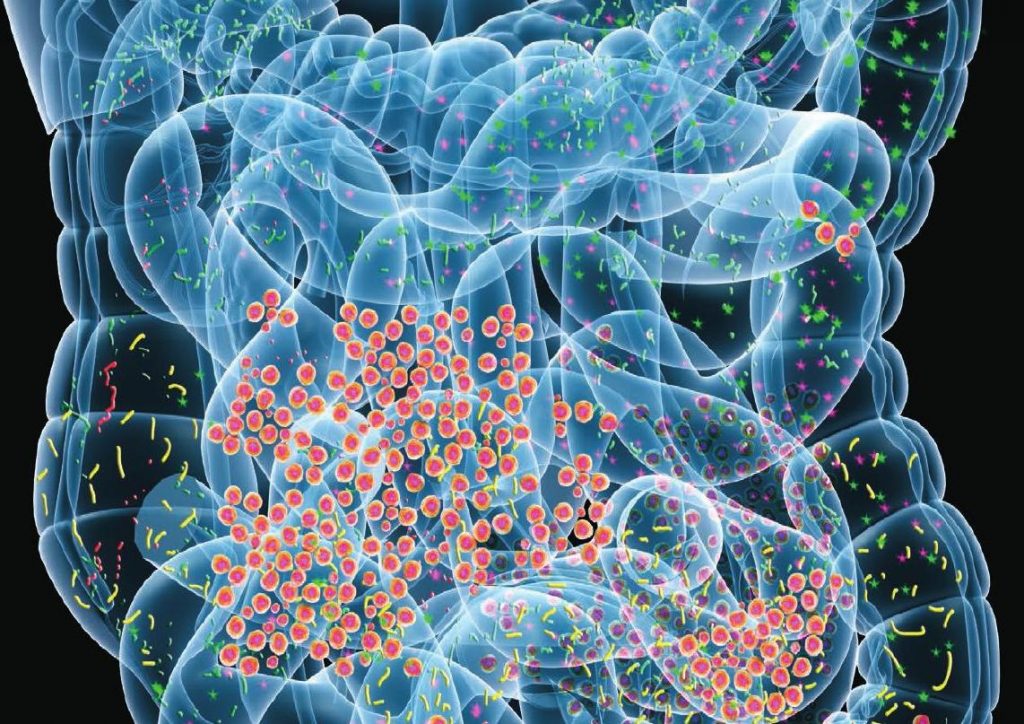Another paper was just published in the peer-reviewed journal Scientific Reports that identified “microbiome perturbation” following “occupationally relevant” doses of an herbicide (Tu et al., 2019).
We have reported before that glyphosate was shown to impact the gut microbiome in honeybees, but this time it was the herbicide 2,4-D administered to laboratory mice. An auxin herbicide, 2,4-D has been used for over 70 years, and is known to be absorbed and eliminated quickly when ingested, and breaks down quickly in water. Given the relatively low environmental levels of 2,4-D, human exposure is most likely to occur in herbicide applicators or by contact with recently treated vegetation.
The EPA has established an Acceptable Daily Intake, or ADI, of 0.01 mg/kg body weight for 2,4-D. But, one study cited by the authors of this paper estimated an occupational exposure of up to 20 mg per day in turf applicators, who apply 2,4-D regularly. Another example of why it is so important to consider different types of herbicide exposure, since the amount of chemical a person is exposed to can vary greatly depending on what types of protective gear is used, or what equipment it is sprayed with.
In this study, which was conducted by researchers at the University of North Carolina and the University of Georgia, mice were dosed with just 1 ppm of 2,4-D per day in their water, which is approximately 60 times lower that the NOAEL for this herbicide (Tu et al., 2019). (Remember NOAEL stands for no-observed-adverse-effect-level and is an important toxicity data point used to set the ADI, the cRfC, and residue tolerances. See our Risk Assessment and Regulation section for more.)
Even at this low dose, the team observed “strong toxic effects,” indicating that 2,4-D could cause problems at far lower doses than previously studied.
The mice in this experiment received daily exposure to 2,4-D laced water for 13 weeks. The research team collected feces samples at several time points in the experiment, and plasma samples were taken during necropsy at week 13. These biological samples revealed that mice exposed to chronic, low-dose 2,4-D differed from control animals in the following ways:
- Reduced species richness and composition of gut microbiota.
- Altered functionality of the gut microbiome as demonstrated by differences in the microbial metabolic pathways
- Metabolic pathways impacted are involved in “urea degradation, amino acid metabolism, and carbohydrate utilization” (Tu et al., 2019)

To put it simply, 2,4-D exposure significantly altered the structure and function of the gut microbiome of mice.
The authors point out that a “disturbed gut-host homeostasis” like what they observed following 2,4-D exposure has important implications for overall health, and is even considered to increase overall risk of disease (Tu et al., 2019).
These microscopic residents of mouse guts (and to be clear, humans have the same kind of dynamic happening in our bellies) play an important role in digestion and disease prevention. Changes in the microbiome have shown to impact how quickly colorectal cancer progresses, and are associated with chronic kidney disease. There may even be a link between the gut microbiome and the current epidemic of gluten intolerance, although the science is still out on that one.
So, if it turns out that herbicide exposure, especially at realistic, low-does levels like in this experiment, can mess up our microbes, serious consequences may ensue.
Source:
Tu, P., Gao, B., Chi, L., Lai, Y., Bian, X., Ru, H., & Lu, K. (2019). “Subchronic low-dose 2,4-D exposure changed plasma acylcarnitine levels and induced gut microbiome perturbations in mice.” Scientific Reports, 9(1), 4363. DOI: 10.1038/s41598-019-40776-3.

